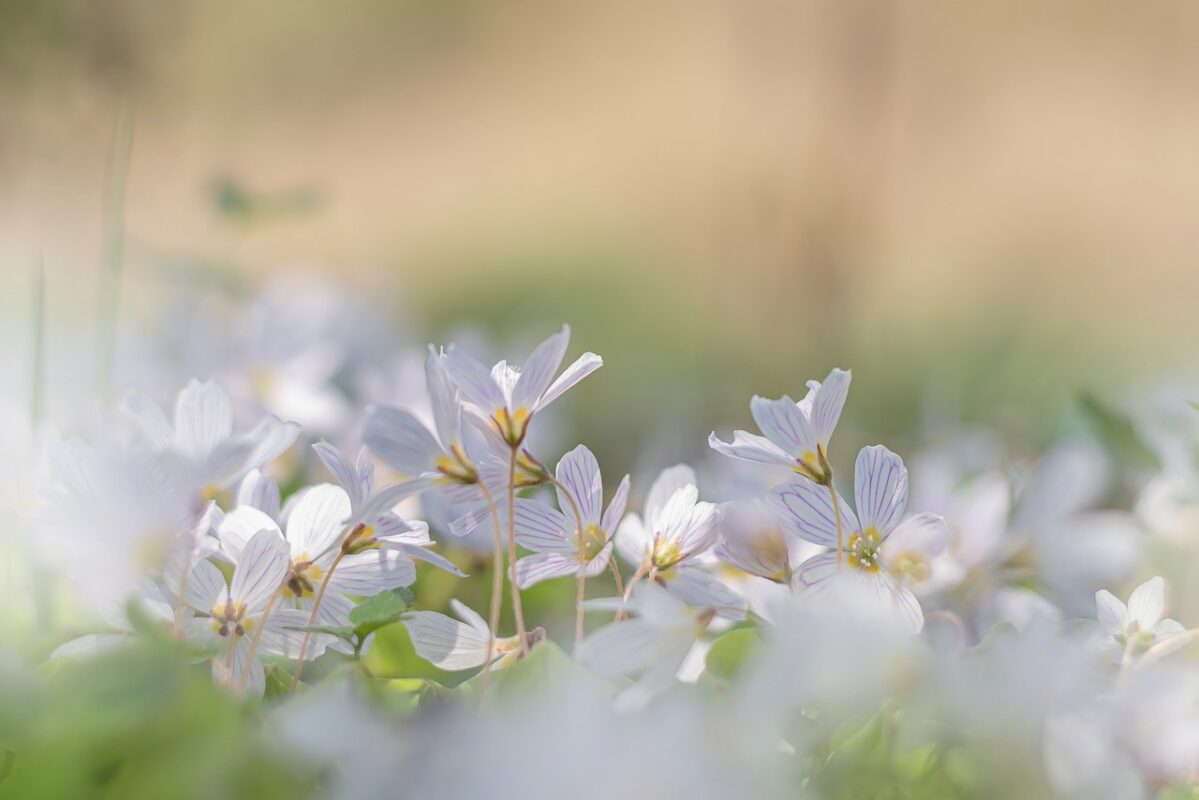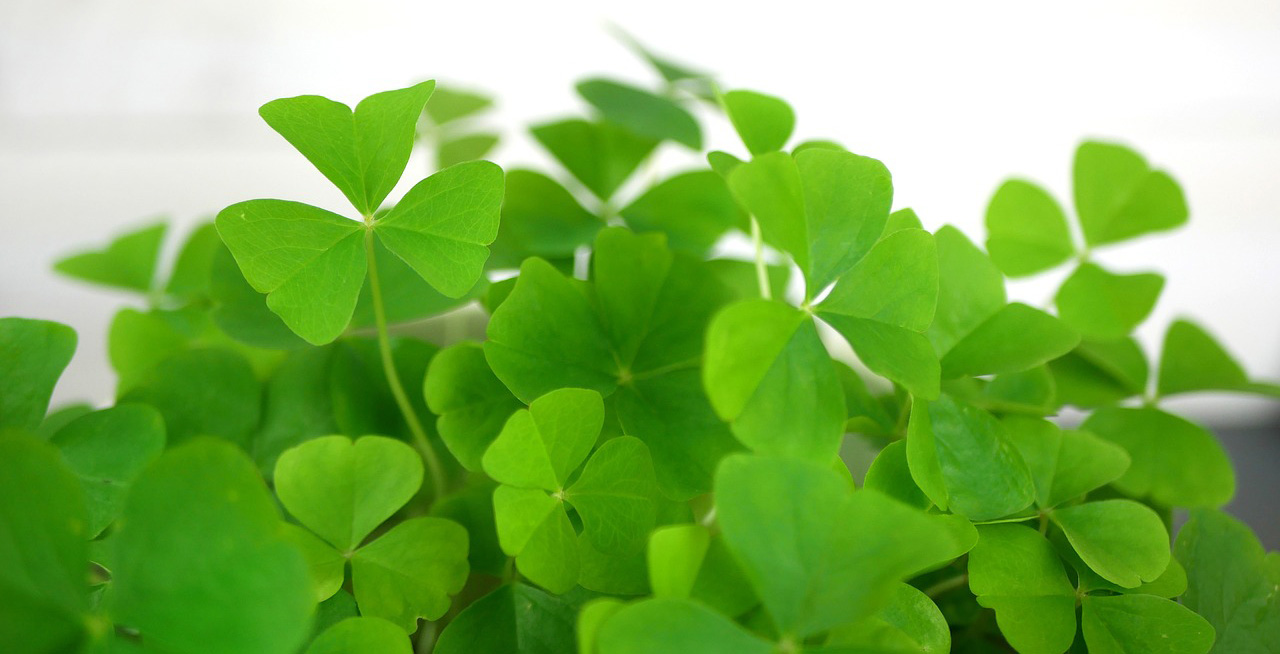IDENTIFICATION
Scientific name:
Oxalis acetosella
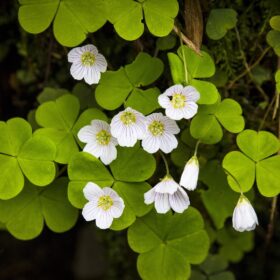
Italian common name:
Acetosella dei boschi, pane degli angeli, pancuculo, trifoglio acetoso, agretta, erba brusca, lambrusca, melagra e alleluja.
Family:
Oxalidacee
Origin:
Eurosiberia and North America
Environment:
It grows in beech, spruce, fir forests, shady and fertile woods and meadows, on acidic soils rich in beech and conifer humus, from sea level to around 2000 m.
Evergreen or deciduous:
evergreen
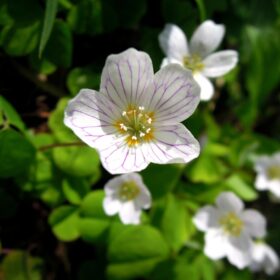
Toxicity:
This plant is absolutely contraindicated for those who suffer from gastric diseases, kidney stones and liver or kidney disorders of any kind, or in cases of pregnancy. Even in cases of more stable health, excessive consumption of wood sorrel is strongly discouraged to avoid the onset of problems affecting the kidneys. Although rarely fatal to humans, if present in large quantities, wood sorrel can be poisonous to livestock.
PLANT RECOGNITION
Height:
5 – 15 cm
Width (extension):
10 – 50 cm
Habit:
creeping, carpeting. Rarely completely erect.
Leaf:
three-lobed, carried by a redened petiole, similar to that of the clover. In rainy weather the leaves contract, bending downwards, taking on the appearance of a small umbrella. They close at night.
Flower:
solitaire white – pearl, 12-20 mm. large, with mauve-lilac veins, rarely pink and a yellow basal spot. The plant produces 2 types of inflorescence, the first in spring, from April to June, which gives rise to a few seeds, while the second in summer, with very short peduncles, is self-pollinated and produces the greatest quantity of seeds for the reproduction of subsequent plants. At night, or in rainy weather, the petals, like the leaves, close on each other. The whole flower thus looks like a small hanging bell.
Flowering: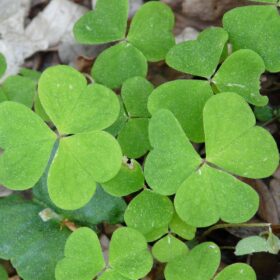
April – June
Fruit:
collected in a capsule having five cavities (pentagonal shaped) 4–10 mm long and each containing one or two seeds immersed in a mucilaginous substance (this type of capsule is defined as a loculicidal ovoid). Upon maturation, the seeds are pushed through a very narrow elastic slit which, by snapping suddenly, launches them with force at considerable distances.
Stem:
Hypogean (buried) part: perennial underground stem, rhizomatous, fleshy and bulbous. It has some swelling due to the sheaths of dead leaves. This stem, crawling and dividing dichotomously (2 by 2 division), forms a continuous thread-like interweaving of vegetative meshes.
Epigeal (aerial) part: ends directly in a floral scape.
Property:
It has refreshing, astringent, purifying properties and externally has anti-inflammatory and decongestant properties. It is also considered an antiscorbutic plant due to its vitamin C content. The plant loses its properties if dried
Parfume: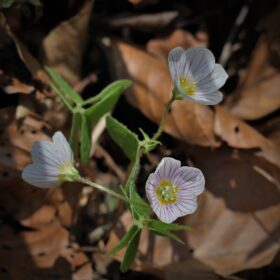
not
NEED
Maintenance:
plant of robust nature, requires little maintenance and develops rapidly
.
Light Exposure:
half shade, shade. Very sensitive to light, it doesn’t need much of it, which is why it is defined as a sciaphilous plant.
Soil type:
It prefers fertile, humus-rich soil, but also woodland (hornbeam and beech) and in any case exposed to the North.
Soil acidity:
pH 3,5 – 6,5
Italian climatic area:
In Italy it is widespread in its natural state in hornbeam and beech woods, with mixed essences, on acid soils rich in humus, on rotting stumps, and generally on slopes facing north, in the northern and central regions, from the plains to the mountains, in the south in mountainous areas (absent in coastal areas and islands)
Need for water: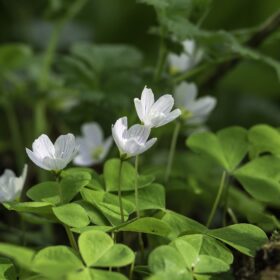
Water abundantly when the soil is dry, but choose well-draining soil because it suffers from water stagnation
Propagation:
seed, division of underground rhizomes
Pruning:
after flowering, removing the remains of withered stems and damaged leaves.
Diseases:
rust, powdery mildew, leaf beetles, sucking insects, caterpillars, leaf rot
PARTICULARITY 
The name of the genus (Oxalis) derives from the Greek oxys (sharp or pungent) for the acid flavor of the plant and from hals (salt) for the high quantity of oxalic acid. The common name of the plant (sorrel) derives from the acidic (but also sour) flavor of the leaves used in ancient times as a dressing for salads and which is reminiscent of vinegar.
Annotations
Grocers prepared a product called “sorrel salt”, extracted from the plant, which was used to remove rust and ink stains from fabrics and was also used to clean leather.
It was also used as a mordant to fix the colors of wool and fabrics and as a descaler for car radiators.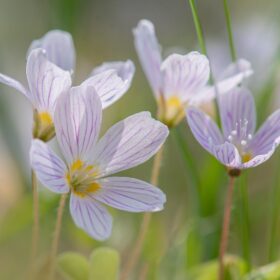
In England it is also popularly called “sleeping beauty” or “sleeping clover” as if to justify its particular behavior during the hottest hours of the day or when it rains, since its leaves and inflorescences are about to close.
In the language of flowers, this little plant, due to its delicate beauty and elegant behavior, is associated with protection and maternal love.
In the kitchen:
For food purposes, the leaves and stems are harvested. It is a precious ingredient for enriching many dishes and giving flavor to soups and roasts. The tender leaves can be added to mixed salads and green sauces to make them more pleasant with that strong acidic and penetrating flavour. You can also prepare a drink that resembles lemonade: boil the leaves in water for about 5 minutes; let cool and sweeten with sugar or honey.
THE MONDO DEL GIARDINO ADVICE
We are publishing the botanical data sheets of these simple herbs because we think they should be taken into serious consideration, for their health, cost, authenticity and ease of cultivation even on the balcony. It seems like a good way to get closer to nature.
Now on horseback! Work awaits us! Our new wonderful outdoor space is about to be born!
GOOD WORK and…if you have any questions, write to info@ilmondodelgiardino.com
Image sources: thanks to Pixabay and many thanks to WikimediaImages for the photo for social media, Lenka Novotná for the cover and, in descending order anfehoe, Майя, Hans, René Schaubhut, Marjatta Caján, Bishnu Sarangi, Lenka Novotná and glambeaudesign for the closing photo.


